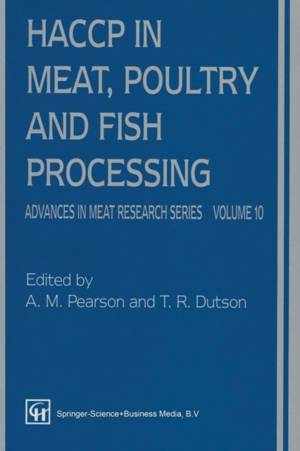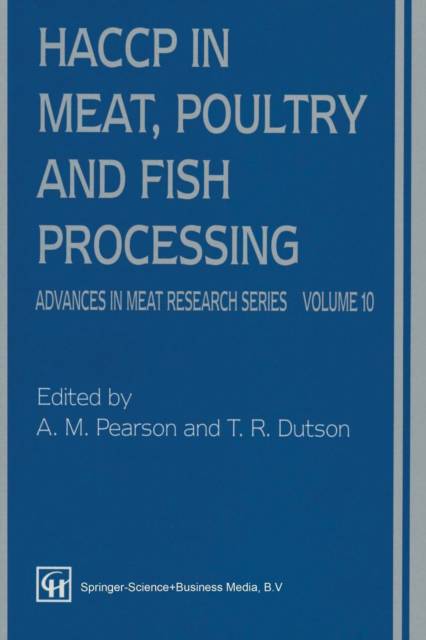
Je cadeautjes zeker op tijd in huis hebben voor de feestdagen? Kom langs in onze winkels en vind het perfecte geschenk!
- Afhalen na 1 uur in een winkel met voorraad
- Gratis thuislevering in België vanaf € 30
- Ruim aanbod met 7 miljoen producten
Je cadeautjes zeker op tijd in huis hebben voor de feestdagen? Kom langs in onze winkels en vind het perfecte geschenk!
- Afhalen na 1 uur in een winkel met voorraad
- Gratis thuislevering in België vanaf € 30
- Ruim aanbod met 7 miljoen producten
Zoeken
Omschrijving
The RACCP (hazard analysis critical control point) concept for food products was an outgrowth of the US space program with the demand for a safe food supply for manned space flights by the National Aeronautics and Space Administration (NASA). The original work was carried out by the Pillsbury Company under the direction of Roward E. Bauman, who as the author of chapter 1 describes the evolution of the RACCP system and its adaptation to foods. The second chapter discusses the adoption of RACCP principles and explains how they fit into the USDA and FDA meat, poultry and seafood inspection systems. The next chapter discusses how RACCP principles can be extended to production of meat, poultry and seafoods, a most important area involved in producing a safe food supply. Chapter 4 deals with the use of RACCP in controlling hazards encountered in slaughtering and distribution of fresh meat and poultry, while chapter 5 discusses the problem - both spoilage and hazards - involved in processing and distribution of meat, poultry and seafood products. Chapter 6 covers the entire area of fish and seafoods, including both fresh and processed products from the standpoints of spoilage and hazards.
Specificaties
Betrokkenen
- Auteur(s):
- Uitgeverij:
Inhoud
- Aantal bladzijden:
- 393
- Taal:
- Engels
- Reeks:
- Reeksnummer:
- nr. 10
Eigenschappen
- Productcode (EAN):
- 9781461358985
- Verschijningsdatum:
- 11/03/2013
- Uitvoering:
- Paperback
- Formaat:
- Trade paperback (VS)
- Afmetingen:
- 156 mm x 234 mm
- Gewicht:
- 576 g

Alleen bij Standaard Boekhandel
+ 223 punten op je klantenkaart van Standaard Boekhandel
Beoordelingen
We publiceren alleen reviews die voldoen aan de voorwaarden voor reviews. Bekijk onze voorwaarden voor reviews.









